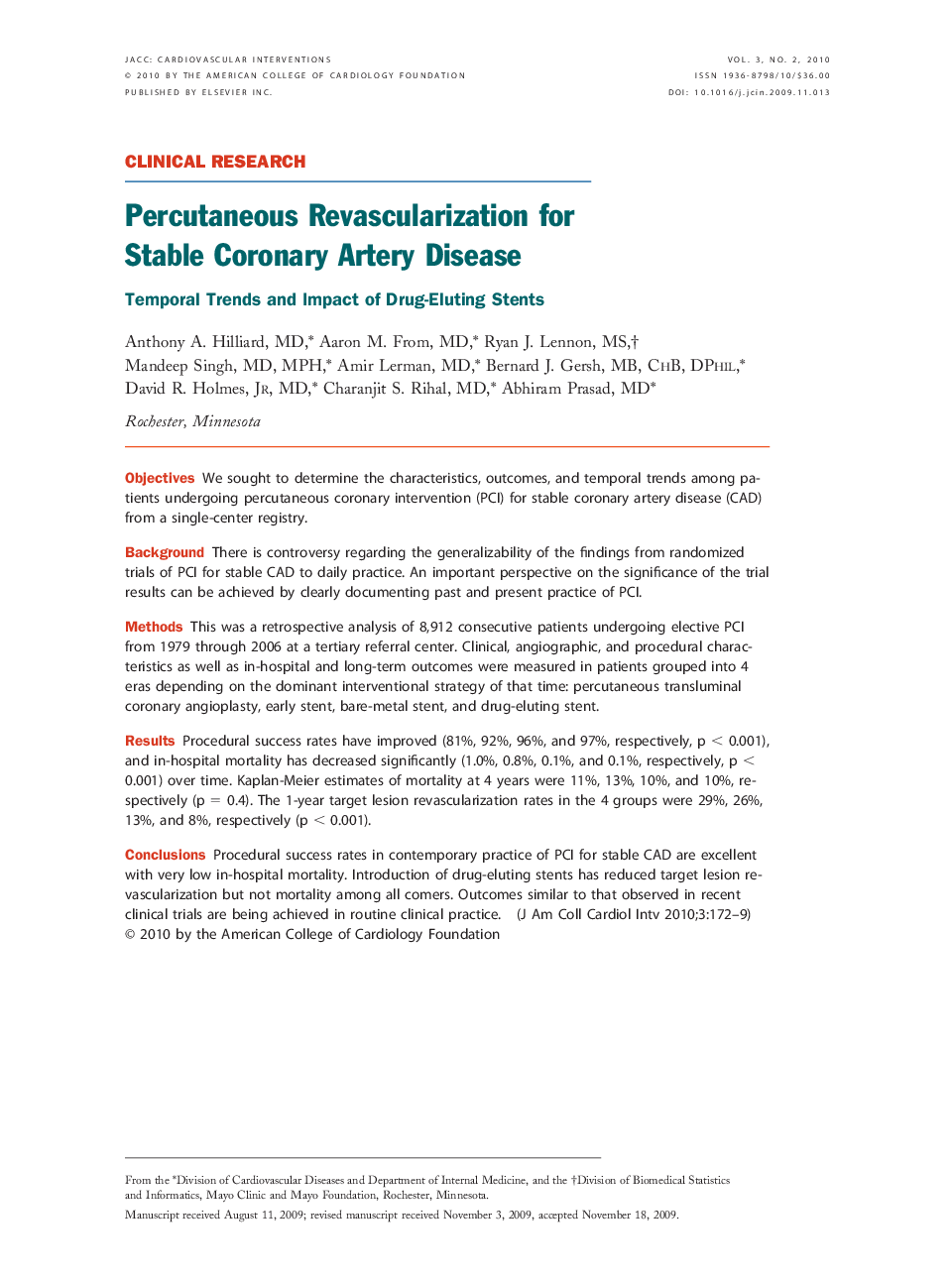| Article ID | Journal | Published Year | Pages | File Type |
|---|---|---|---|---|
| 2941956 | JACC: Cardiovascular Interventions | 2010 | 8 Pages |
ObjectivesWe sought to determine the characteristics, outcomes, and temporal trends among patients undergoing percutaneous coronary intervention (PCI) for stable coronary artery disease (CAD) from a single-center registry.BackgroundThere is controversy regarding the generalizability of the findings from randomized trials of PCI for stable CAD to daily practice. An important perspective on the significance of the trial results can be achieved by clearly documenting past and present practice of PCI.MethodsThis was a retrospective analysis of 8,912 consecutive patients undergoing elective PCI from 1979 through 2006 at a tertiary referral center. Clinical, angiographic, and procedural characteristics as well as in-hospital and long-term outcomes were measured in patients grouped into 4 eras depending on the dominant interventional strategy of that time: percutaneous transluminal coronary angioplasty, early stent, bare-metal stent, and drug-eluting stent.ResultsProcedural success rates have improved (81%, 92%, 96%, and 97%, respectively, p < 0.001), and in-hospital mortality has decreased significantly (1.0%, 0.8%, 0.1%, and 0.1%, respectively, p < 0.001) over time. Kaplan-Meier estimates of mortality at 4 years were 11%, 13%, 10%, and 10%, respectively (p = 0.4). The 1-year target lesion revascularization rates in the 4 groups were 29%, 26%, 13%, and 8%, respectively (p < 0.001).ConclusionsProcedural success rates in contemporary practice of PCI for stable CAD are excellent with very low in-hospital mortality. Introduction of drug-eluting stents has reduced target lesion revascularization but not mortality among all comers. Outcomes similar to that observed in recent clinical trials are being achieved in routine clinical practice.
